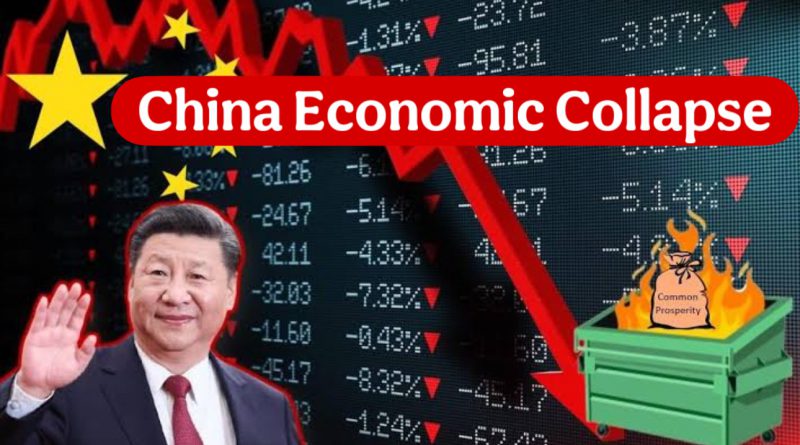ANALYSIS: China Is Heading for an Economic Collapse
Washington — China is facing one of its most severe economic crises in decades, with indicators suggesting that a comprehensive collapse could occur within the next 18 months.
Faisal Ibrahim Alshammeri, a Saudi analyst, has painted a bleak picture of China’s economic landscape, highlighting a rapid financial hemorrhage, difficulties in manipulating the exchange rate, and a failure to inject sufficient liquidity into the markets. All of these factors contribute to a looming internal breakdown in the country’s economic system, exacerbated by an ongoing real estate collapse and a declining investment climate.
The situation is particularly ironic given that those who once championed globalization—the very entities that moved industries and jobs to China in pursuit of lower costs and higher profits—are now among its victims. Multinational corporations that heavily relied on China’s manufacturing and consumer base are witnessing significant financial losses, realizing that their gamble on an opaque and unpredictable economy has not paid off. The once-promising business environment in China is now being seen as a high-risk venture.
Amid these growing economic troubles, Beijing has responded to Washington by imposing reciprocal tariffs. However, this move appears to be counterproductive. China’s exports to the United States are relatively limited in scope, consisting mainly of food and some consumer goods. By shutting itself off from the world’s largest consumer market, China is only deepening its economic troubles. Domestically, it lacks a consumer base with enough purchasing power and confidence to offset these losses, further accelerating its downturn.
This crisis marks not just a temporary economic slump but potentially the collapse of the traditional globalization model that has dominated world trade since the end of World War II. This model, which has overwhelmingly benefited China, is now being reassessed as the United States and its allies shift towards a new economic framework. The diminishing ability of Beijing to effectively manage its internal crises has fast-tracked the decline of the old global financial system, signaling the rise of a new era in international trade and economic policy.
The upcoming transition will be fraught with challenges, but it is expected to be decisive. By the end of this year, the United States is predicted to enter a phase of robust economic recovery, not only bouncing back from setbacks but also leading a restructuring of global economic power. This shift will likely establish an alternative model of globalization—one that prioritizes balance, stability, national sovereignty, and strategic economic interests over unfettered free trade.
In a further escalation of trade tensions, former U.S. President Donald Trump has issued a stark warning to China, threatening to impose an additional 50% tariff on Chinese imports if Beijing does not reverse its recently introduced retaliatory tariffs of 34% by April 8, 2025. Reports indicate that these new U.S. tariffs will be enforced on April 9 if China fails to comply. Trump has also suggested that, should China refuse to yield, the United States may entirely abandon ongoing trade negotiations with Beijing and instead shift its focus to countries more willing to engage in favorable trade deals.
As the world watches these developments unfold, it is becoming increasingly evident that China is navigating treacherous economic waters. Whether Beijing can devise a strategy to reverse its downward trajectory remains uncertain, but one thing is clear: the global economic landscape is on the cusp of a major transformation, with far-reaching implications for international trade, investment, and economic stability.



